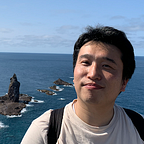Noisy Universal Domain Adaptation (CVPR2021)
We are delighted to announce that one of our papers got accepted to the IEEE/CVF Conference on Computer Vision and Pattern Recognition (CVPR2021).
Yu Qing, Atsushi Hashimoto, and Yoshitaka Ushiku, “Divergence Optimization for Noisy Universal Domain Adaptation” accepted to CVPR2021. [arXiv] [cvf][github] [YouTube]
This work is an achievement by the first author, Yu Qing from the University of Tokyo, as his internship project in OMRON SINIC X.
Unsupervised Domain Adaptation
Although deep learning techniques have enabled a variety of applications, most of them inevitably suffer from the problem of “domain shift.” When developing a deep learning application, people usually collect samples from “known” environments (source domain). The application can, however, be deployed to “unknown” environments (target domain) where observed data are biased differently from those in the training environments. Unsupervised Domain adaptation (UDA) is the problem resolving domain shift only with supervised samples from the source domain and unsupervised samples from the target domain. UDA has been one of the most competitive topics in computer vision and machine learning communities.
In this paper, we consider a new problem setting called Noisy Universal domain adaptation (Noisy-UniDA), which simulates a challenging but also practical situation. If we could train a model from noisy data on the internet that are labeled inaccurately… If we could use samples collected in a new environment to enhance the model without checking the suitability… By solving Noisy-UniDA, we aim to develop such a lazy training framework! Noisy-UniDA extends the problem of UniDA, in which some categories in source domains do not appear in the target domain (source private categories) and samples from unknown categories appear in the target domain (target private categories) by further considering noisy supervision in the source domain samples.
Our question
For the problem of noisy labels, there is a major approach that uses two-head deep learning architecture, where two different classifiers communicate with each other to identify the label noise. There is also a UDA method using a similar two-head architecture, Maximum Classifier Discrepancy (MCD). Hence, we seek to unify these two approaches and develop a new training pipeline that maintains divergence on outputs of the two-head architecture, which best performs to train a model in the Noisy-UniDA setting. The following figures show the pipeline and a visualization of the obtained decision boundaries on a toy dataset.
Results
We tested the model with several label noise settings: Pair 20%, Pair 45%, Symmetric 20%, Symmetric 45% (see the previous paper for the detailed definition) with source/target private categories as in the original UniDA paper. As seen in the table, our method performed the best among state-of-the-art methods for UniDA (DANCE) and its sub-problems, and also a simple combination of DANCE and label noise selection in most settings.
What’s next
Any suggestion for the industrial use of this method is welcome. In that case, please contact us at contact@sinicx.com.
At OMRON SINIC X, we will continue fundamental research on natural language processing, computer vision, machine learning, and robotics. If you are interested in working with us as an intern, send us your application at internships@sinicx.com and get in touch!
